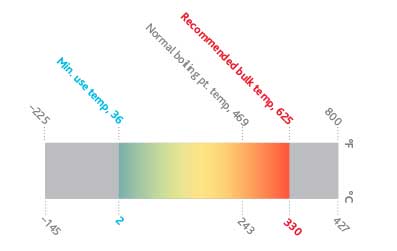Why Warm Transfer Liquid Is Necessary for Optimizing Power Transfer in Equipment
The role of warm transfer liquids in maximizing energy transfer is critical for accomplishing reliable thermal monitoring across various industrial markets. These liquids facilitate seamless warmth exchange, guaranteeing procedures run within optimum temperature level ranges and reducing the danger of getting too hot. Their selection, based on elements like viscosity and thermal stability, directly influences the effectiveness and sustainability of a system. Nevertheless, the details of choosing the right fluid are commonly taken too lightly. What are the important factors to consider for this option, and just how do they influence both financial efficiency and environmental duty in commercial applications?

Role in Thermal Management
Heat transfer fluids play an essential role in thermal administration by efficiently controling temperatures in various industrial procedures and systems. These specialized liquids assist in the transfer of warm between different elements, making sure ideal operating conditions and preventing overheating. By keeping specific temperature level control, warm transfer fluids allow industries such as chemical manufacturing, oil and gas, and power generation to run securely and efficiently.
The selection of a proper warm transfer fluid depends on numerous aspects, consisting of thermal stability, warmth capability, and viscosity. High thermal security makes sure that the fluid can withstand severe temperatures without deteriorating, while a high warmth capability permits it to soak up and release significant amounts of heat - heat transfer fluid. Reduced viscosity lowers the energy needed for pumping, contributing to overall system effectiveness
Additionally, heat transfer liquids are essential in applications like refrigeration, where they aid take in and dissipate warmth during the cooling cycle. In solar thermal power systems, these fluids capture and transportation solar warm to create power or offer warm water. Their versatility to varied operating conditions and capacity to maintain regular thermal performance highlight their importance in industrial thermal monitoring, assisting in functional continuity and improving precaution.

Enhancing System Efficiency
To make the most of the advantages of thermal administration, boosting system efficiency with the tactical use warm transfer liquids is critical. These liquids play a crucial duty in optimizing power transfer by assisting in consistent thermal guideline, which subsequently impacts the total performance and durability of systems. Reliable heat transfer brings about reduced power losses, reduced operational expenses, and boosted reliability of devices. By maintaining optimum temperature level degrees, warmth transfer liquids aid guarantee that systems run within their made parameters, thereby avoiding getting too hot and reducing the risk of element failure.

Kinds of Warmth Transfer Liquids
The variety of warm transfer liquids highlights their important function in a series of industrial applications, each customized to meet specific thermal management needs. These liquids assist in effective energy transfer and are selected based on key residential or commercial properties such as thermal stability, thickness, and warmth capability. The main types consist of water, glycol options, oils, and synthetics, each offering unique advantages.
Water is the most typical warm transfer medium due to its high details warm capacity and reduced expense. Mineral oils are favored for their thermal security and non-corrosive nature, making them suitable for high-temperature applications.

These fluids guarantee remarkable efficiency in systems where standard liquids may stop working. The choice of a warm transfer fluid is vital, as it influences system performance, security, and longevity.
Environmental and Economic Conveniences
Utilizing the right heat transfer liquids uses significant ecological and financial benefits for industrial operations. By selecting liquids with premium thermal security and high warm visit capability, markets can enhance power performance, bring about minimized fuel consumption and lower greenhouse gas exhausts. This contributes to a smaller sized carbon footprint and aligns with global sustainability objectives. Eco-friendly warm transfer fluids, often naturally degradable and non-toxic, minimize the threat of soil and water contamination in case of leakages or spills, thus protecting ecosystems and abiding with rigorous environmental regulations.
Economically, the ideal warm transfer fluid can considerably decrease operational costs. Fluids with prolonged lifecycle performance reduce the regularity of replacements and maintenance, minimizing downtime and associated costs. Generally, the calculated usage of ideal heat transfer liquids sustains sustainable economic development and environmental stewardship.
Choosing the Right Liquid
Exactly how does one navigate the complicated process of picking the best heat transfer liquid for industrial applications? Selecting the ideal fluid is important, as it straight influences system performance, security, and operational expenses. Key considerations include thermal security, compatibility with system materials, and running temperature array. Thermal stability makes certain the fluid can hold up against high temperatures without degrading, while compatibility stops corrosion or other destructive reactions with system elements. The operating temperature level variety have to align with the system's needs to preserve efficiency and longevity - heat transfer fluid.
Furthermore, the fluid's heat capacity and thickness are extremely important. A high warmth ability permits the read more liquid to take in and transfer even more power, enhancing efficiency.
Conclusion
The critical choice and application of warmth transfer fluids are basic to enhancing energy transfer throughout different systems. By ensuring high thermal stability and ability, these fluids give accurate temperature level control and enhance general system efficiency.